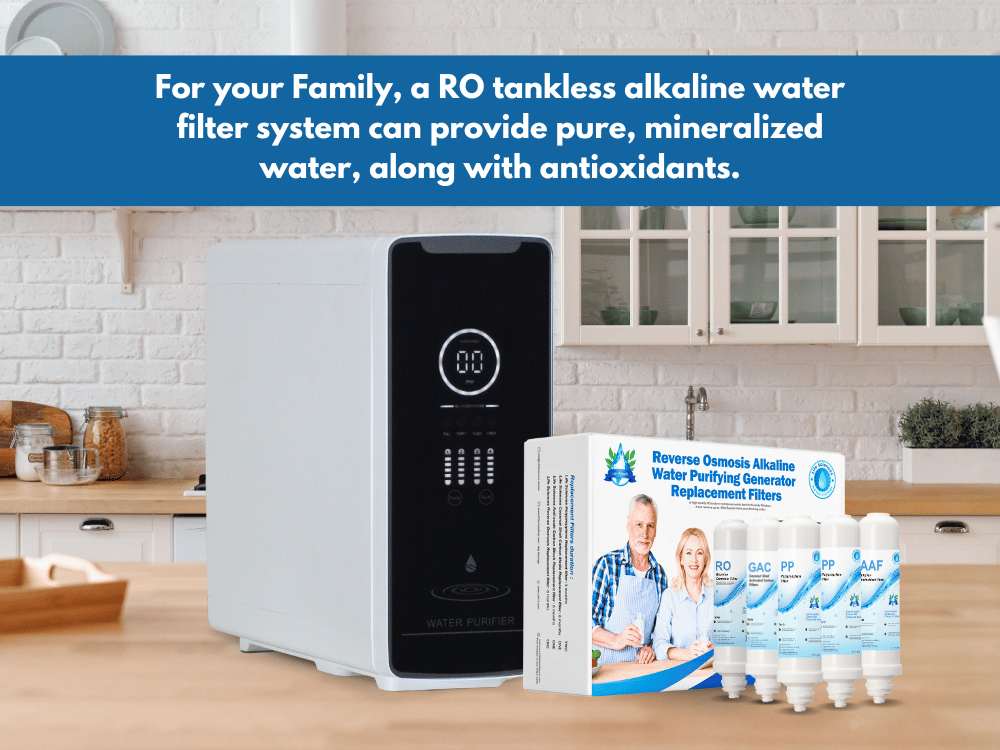In the United States, ensuring drinking water safety and quality is of paramount importance. With over 270 million people relying on drinking water sourced from various utilities across the country, A thorough screening of the water is crucial. Endocrine disruption compounds (EDCs) and pharmaceuticals are two such groups of concern.
Analyzing Pharmaceuticals and EDCs in U.S. Drinking Water
In 2006 and 2007, 51 compounds were detected in source water, finished drinking water, and distribution system (tap) water from 19 U.S. water utilities. The study examined the presence and levels of pharmaceuticals and EDCs at different stages of water treatment.
The compounds under investigation included atenolol, atrazine, carbamazepine, estrone, gemfibrozil, meprobamate, naproxen, phenytoin, sulfamethoxazole, TCEP, and trimethoprim. In most cases, the contaminants were less than 10ng/L, indicating low contamination levels. However, a few compounds exhibited higher concentrations in certain water sources.
The analysis highlighted specific compounds that deserve attention due to their frequency of detection and potential implications for water quality. These compounds include:
- Atrazine: Atrazine was detected in source waters even in areas with no agricultural applications, suggesting that wastewater could be a significant source of organic contaminants.
Atrazine concentrations were 32 ng/L in source water, 49 ng/L in finished water, and 49 ng/L in the distribution system. - Sulfamethoxazole: The source water displayed a concentration of 12 ng/L of sulfamethoxazole, which was higher than other compounds analyzed.
- TCEP: Source water exhibited a concentration of 120 ng/L for TCEP, indicating a potential risk to water quality.
What are the Endocrine Disruptors ?
Endocrine disruptors are substances that disrupt the delicate balance of hormones in our bodies. They can mimic or block natural hormones, disrupting normal bodily functions.
It includes natural substances (hormones like estrone and estriol) and synthetic chemicals, such as pesticides, pharmaceuticals, and plastics (phthalates and bisphenol A).
Some of the most common endocrine disruptors include:
- Phthalates: These chemicals are commonly found in plastics, personal care products, and medical devices. They can interfere with hormone production and function, especially those related to reproductive health.
- Bisphenol A (BPA): BPA is often found in plastic containers, food can linings, and thermal paper receipts. It mimics estrogen in the body, leading to potential reproductive issues and other health problems.
- Perfluoroalkyl substances (PFAS): PFAS are widely used in non-stick coatings, water-resistant fabrics, and firefighting foams. They have been linked to hormone disruption, immune system suppression, and even cancer.
- Organophosphate Pesticides: Commonly used in agriculture, these pesticides can interfere with the nervous system’s normal functioning and disrupt hormone regulation. DDT was one of the first widely used pesticides.
- Triclosan: Found in many antibacterial soaps, toothpaste, and cosmetics, triclosan disrupts thyroid function and hormonal balance.
- Water with lead: Not just in Flint, Michigan, but all over the country people worry about lead in drinking water. This is because lead, even at low levels, can cause long-term mental difficulties in children. Higher levels can cause problems with the developing brain, kidneys, and bones.

Endocrine disruptors in tap water: Is it possible?
In 2008, the U.S. Geological Survey found that 85 man-made chemicals, including some medications, slip through municipal treatment systems and end up in our water supply.
An Associated Press report found trace amounts of over a dozen pharmaceuticals in the water supplies of 46 million Americans.
These findings highlight the potential for endocrine disruptors to enter the tap water supply and expose individuals to these compounds through regular consumption.
- When medications are consumed, they are metabolized by the body, and their remnants can be excreted in the urine. When wastewater containing these pharmaceutical compounds is treated in municipal facilities, some chemicals escape conventional treatment processes.
- These chemicals can enter water bodies, including drinking water sources. And improper disposal of unused medications, such as flushing them down the toilet, can also contribute to the introduction of these substances into the water supply.
The Health Risks of Endocrine Disruptors:
Exposure to endocrine disruptors can have serious implications for our health. These chemicals have been associated with a variety of health risks, including:
- Reproductive Issues: Endocrine disruptors affect fertility, reproductive development, and hormone-dependent cancers. They may contribute to reduced sperm quality, early puberty, and infertility.
- Neurological Effects: Certain endocrine disruptors have been linked to developmental disorders, cognitive impairments, and behavioral abnormalities, particularly in children.
- Metabolic Disorders: Hormone-altering chemicals can interfere with metabolic processes, potentially leading to weight gain, diabetes, and other metabolic disorders.
- Cancer: Some endocrine disruptors have been classified as carcinogens, increasing the risk of various types of cancer, including breast, prostate, and ovarian cancer.
- Some studies show that EDC effects can even be passed from parent to child (i.e., transgenerational).
Minimize your exposure to endocrine disruptors:
While it may be challenging to completely eliminate exposure to endocrine disruptors, there are steps you can take to minimize your contact with these harmful chemicals. Here are some practical tips.
- Choose natural and organic products: Choose natural and organic products whenever possible. Look for labels that indicate “phthalate-free,” “BPA-free,” and “paraben-free.” This applies to personal care items, cleaning products, and even food packaging.
- Be mindful of plastics: Reduce your use of plastic products, especially those with recycling codes 3 (PVC) and 7 (containing BPA). Instead, choose glass, stainless steel, or BPA-free plastic alternatives.
- Eat fresh, unprocessed foods: Processed foods often contain higher levels of endocrine disruptors. To minimize your exposure, prioritize fresh, organic produce, and choose locally sourced, hormone-free meats and dairy

Enhancing Water Safety with High-Quality Home Water Filtration Systems
In addition to the steps recommended by the National Institutes of Health (NIH) to address the presence of endocrine-disrupting chemicals in tap water, installing a high-quality home water filtration system can be an effective measure to further safeguard your drinking water.
RO Tankless alkaline water systems for Home remove various contaminants, including endocrine disruptors, providing an additional layer of protection for you and your Family.
Activated carbon filters, reverse osmosis systems, and selective filtration technologies are commonly used in home filtration systems. They have demonstrated effectiveness in removing contaminants, including endocrine disruptors.
Looking for the best tankless alkaline water system for your home? Check out the Life Sciences Reverse Osmosis Alkaline Water Purifying Generator with tankless technology. This cutting-edge system offers clean, pure water with a 5-stage filtration process and alkaline water integration.
For your Family, a RO tankless alkaline water filter system can provide pure, mineralized water, along with antioxidants.
LifeWater Report Offers top-quality tankless alkaline water systems at cheapest prices. Our systems are manufactured with the highest quality components, most come with an outstanding Lifetime warranty, and have high customer satisfaction ratings. Our top-rated reverse osmosis alkaline water system removes 85-92% of CONTAMINANTS from drinking water. click here
Check water contaminants by zip code in your area FREE:
www.LifeWaterReprot.com is the easiest way to generate a water analysis of your water – at no cost to you.
If you own a private well, we recommend testing for coliform bacteria and nitrate every year.
Our Life Water Quality Reports reveal the level of contaminants detected in the water supply serving your home.
Conclusion,
The presence of endocrine-disrupting compounds (EDCs) in various environmental compartments, including wastewater, rivers, and soil, is a well-documented issue. EDCs encompass a wide range of organic micropollutants, such as pharmaceuticals, personal care products, antibiotics, pesticides, organic synthetic compounds, and estrogens. This highlights the potential for these compounds to enter aquatic ecosystems and pose risks to wildlife and human health.
Visit http://www.
- Milovac T. (2023). Pharmaceuticals in the Water: The Need for Environmental Bioethics. The Journal of medical humanities, 44(2), 245–250. https://doi.org/10.1007/
s10912-022-09774-x - Nassiri Koopaei, N., & Abdollahi, M. (2017). Health risks associated with the pharmaceuticals in wastewater. Daru : journal of Faculty of Pharmacy, Tehran University of Medical Sciences, 25(1), 9. https://doi.org/10.1186/
s40199-017-0176-y - Kumar, A., Chang, B., & Xagoraraki, I. (2010). Human health risk assessment of pharmaceuticals in water: issues and challenges ahead. International journal of environmental research and public health, 7(11), 3929–3953. https://doi.org/10.3390/
ijerph7113929
